
982 Franklina is a background asteroid from the outer regions of the asteroid belt, approximately 32 kilometers in diameter. It was discovered on 21 May 1922, by South African astronomer Harry Edwin Wood at the Union Observatory in Johannesburg. The uncommon A/Ld-type asteroid has a rotation period of at least 16 hours. It was named after British amateur astronomer John Franklin Adams (1843–1912).
1313 Berna, provisional designation 1933 QG, is a background asteroid and synchronous binary system from the Eunomian region in the central asteroid belt, approximately 14 kilometers in diameter. It was discovered on 24 August 1933, by Belgian astronomer Sylvain Arend at the Uccle Observatory in Belgium. The assumed S-type asteroid has a longer-than average rotation period of 25.5 hours and is likely elongated in shape. It was named for the Swiss capital of Bern. The discovery of an 11-kilometer-sized companion was announced in February 2004.
1575 Winifred, provisional designation 1950 HH, is a stony Phocaea asteroid and slow rotator from the inner regions of the asteroid belt, approximately 9.5 kilometers in diameter.
1074 Beljawskya, provisional designation 1925 BE, is a Themistian asteroid from the outer region of the asteroid belt, approximately 48 kilometers in diameter.
3567 Alvema, provisional designation 1930 VD, is a dark asteroid from the middle region of the asteroid belt, approximately 14 kilometers in diameter. It was discovered by Belgian astronomer Eugène Delporte at the Royal Observatory of Belgium in Uccle, on 15 November 1930. It was named after the discoverer's three great-granddaughters Aline, Vérionique and Martine.
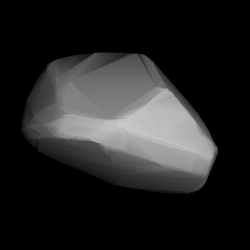
3544 Borodino (prov. designation: 1977 RD4) is a stony background asteroid from the inner regions of the asteroid belt, approximately 9 kilometers (5.6 miles) in diameter. It was discovered on 7 September 1977, by Soviet astronomer Nikolai Chernykh at the Crimean Astrophysical Observatory in Nauchnij, on the Crimean peninsula. The likely elongated S-type asteroid has a rotation period of 5.44 hours. It was named for the Russian village of Borodino where the Battle of Borodino took place.
1609 Brenda, provisional designation 1951 NL, is a stony asteroid from the central region of the asteroid belt, approximately 28 kilometers in diameter. It was discovered on 10 July 1951, by South African astronomer Ernest Johnson at the Johannesburg Observatory in South Africa, and named after his granddaughter, Brenda.
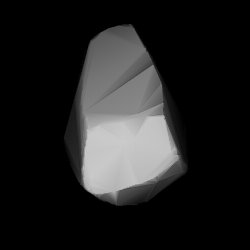
1335 Demoulina, provisional designation 1934 RE, is a stony Florian asteroid from the inner regions of the asteroid belt, approximately 7 kilometers in diameter. Discovered by Karl Reinmuth at Heidelberg Observatory in 1934, the asteroid was named after Prof. Demoulin, a Belgian astronomer at Ghent University. It has a slower-than average spin rate of nearly 75 hours.
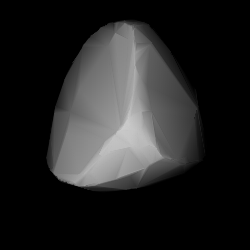
1328 Devota, provisional designation 1925 UA, is a dark background asteroid from the outermost regions of the asteroid belt, approximately 56 kilometers in diameter. It was discovered on 21 October 1925, by Russian–French astronomer Benjamin Jekhowsky at the Algiers Observatory in North Africa. The asteroid was named after Argentine astronomer Fortunato Devoto.
1267 Geertruida, provisional designation 1930 HD, is a carbonaceous background asteroid from the inner regions of the asteroid belt, approximately 20 kilometers in diameter. Discovered by astronomer Hendrik van Gent at Johannesburg Observatory in 1930, the asteroid was later named after Geertruid Pels, sister of Dutch astronomer Gerrit Pels.
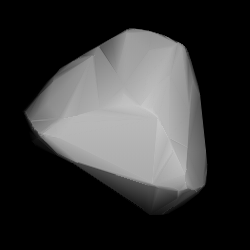
1356 Nyanza, provisional designation 1935 JH, is a dark asteroid from the background population of the outer asteroid belt, approximately 63 kilometers in diameter. It was discovered on 3 May 1935, by South-African astronomer Cyril Jackson at the Union Observatory in Johannesburg. The asteroid was named for the former Nyanza Province in Kenya, Africa.
1426 Riviera, provisional designation 1937 GF, is a bright asteroid from the central regions of the asteroid belt, approximately 16 kilometers in diameter. Discovered by Marguerite Laugier at the Nice Observatory in 1937, the asteroid was later named for the Côte d'Azur, also known as French Riviera.
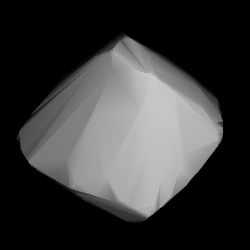
1430 Somalia, provisional designation 1937 NK, is a stony background asteroid from the central regions of the asteroid belt, approximately 10 kilometers in diameter. It was discovered on 5 July 1937, by astronomer Cyril Jackson at the Union Observatory in Johannesburg. It was named for the African country of Somalia.
7776 Takeishi, provisional designation 1993 BF, is a background asteroid from the inner regions of the asteroid belt, approximately 6 kilometers in diameter. It was discovered on 20 January 1993, by Japanese astronomer Takeshi Urata at the Nihondaira Observatory in Japan. The assumed S-type asteroid has a rotation period of 8.9 hours. It was named after Japanese amateur astronomer Masanori Takeishi.
2019 van Albada, provisional designation 1935 SX1, is a stony Florian asteroid and former spacecraft target from the inner regions of the asteroid belt, approximately 8 kilometers in diameter. It was discovered on 28 September 1935, by Dutch astronomer Hendrik van Gent at Leiden Southern Station, annex to the Johannesburg Observatory in South Africa. The asteroid was later named after Gale Bruno van Albada.
1660 Wood, provisional designation 1953 GA, is a stony Phocaea asteroid from the inner regions of the asteroid belt, approximately 12 kilometers in diameter. It was named after British–South African astronomer Harry Edwin Wood.
1922 Zulu, provisional designation 1949 HC, is a carbonaceous asteroid in a strongly unstable resonance with Jupiter, located in the outermost regions of the asteroid belt, and approximately 20 kilometers in diameter. It was discovered on 25 April 1949, by South African astronomer Ernest Johnson at Union Observatory in Johannesburg, and named for the South African Zulu people.
2195 Tengström, provisional designation 1941 SP1, is a stony Florian asteroid from the inner regions of the asteroid belt, approximately 8 kilometers in diameter. It was discovered on 27 September 1941, by Finnish astronomer Liisi Oterma at Turku Observatory in Southwest Finland, and named for Swedish geodesist Erik Tengström.
6181 Bobweber, provisional designation 1986 RW, is a stony asteroid from the inner regions of the asteroid belt, approximately 5 kilometers in diameter. It was discovered on 6 September 1986, by American astronomer Eleanor Helin at the U.S. Palomar Observatory in California, and named after astronomer Robert Weber.
10208 Germanicus, provisional designation 1997 QN1, is a stony Florian asteroid and binary system from the inner regions of the asteroid belt, approximately 3.5 kilometers in diameter.






